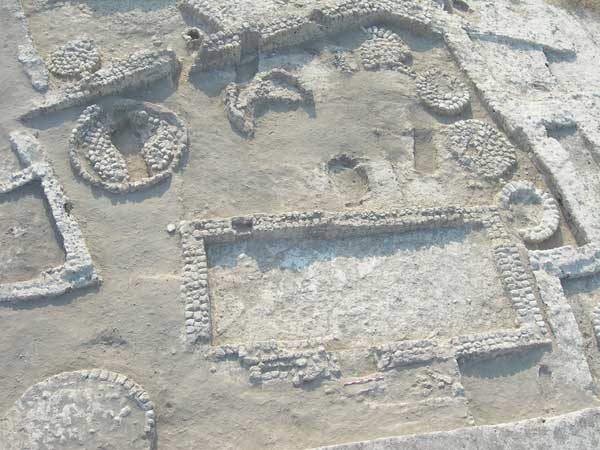![0825-ctt-Copper-Awl.-Photo-Credit---Yosef-Garfinkel[1]-lo 0825-ctt-Copper-Awl.-Photo-Credit---Yosef-Garfinkel[1]-lo](https://ceramics.org/wp-content/uploads/2014/08/0825-ctt-Copper-Awl.-Photo-Credit-Yosef-Garfinkel1-lo.jpg)
[Image above] A 7,000-year-old copper awl uncovered in the Middle East is the oldest metal object found there and could help researchers unlock even more secrets about the ancient village of Tel Tsaf. Credit: Yosef Garfinkel
September just seems to be an art, archaeology, and conservation science (AACS) kind of month.
Not only is the ACerS Bulletin cover story by AACS vice-chair Glenn Gates dedicated to discovering the material secrets of art, but the discovery of an ancient copper awl at an excavation site in the Middle East has uncovered some material secrets of its own.
Researchers from the Zinman Institute of Archaeology and the University of Haifa (Israel) have found that the awl unearthed during a previous excavation at Tel Tsaf, located near the Jordan River, is one of the oldest metal objects found there to date.
Age, however, ain’t nothing but a number: The discovery is especially significant because it proves that those in the region were using metals much earlier than previously thought.
The awl was discovered in 2007 in the sealed grave of a 40-year-old woman by Hebrew University’s Yosef Garfinkel. But not much was known about the object until just recently.
Chemical analysis of the 4 cm-long, 1 mm-thick object by Sariel Shalev of Haifa’s Department of Archaeology shows that it dates back to the late 6th millennium B.C. or early 5th millennium B.C.—hundreds of years before those in the Middle East were thought to have been using metals.
The analysis also shows that the metal may have come from some 1,000 kilometers outside of Tel Tsaf. Knowing that, it makes the import of a new technology and the processing of a raw material from a distance particularly important, says research lead Danny Rosenberg.
Since it was first documented in the 1950s, Tel Tsaf (5200–4600 B.C.) has been a hotbed of archaeological activity. Previous digs have uncovered buildings made of mud bricks and pottery “unlike that found in almost any other region” that speak volumes about the community’s commercial and artistic past. According to a university press release, these excavations have made the village “the most important archeological site in the region dated to this period, has been supplying researchers with a great deal of valuable data, and continues to do so during this latest research project.”
That valuable data includes insights about the woman and the community, but also leaves researchers with questions yet to be answered.
“The appearance of the item in a woman’s grave, which represents one of the most elaborate burials we’ve seen in our region from that era, testifies to both the importance of the awl and the importance of the woman, and it’s possible that we are seeing here the first indications of social hierarchy and complexity,” says Rosenberg. “However, in this area far more is unknown than is known, and although the discovery of the awl at Tel Tsaf constitutes evidence of a peak of technological development among the peoples of the region and is a discovery of global importance, there’s a lot of progress still to be made and many parts of the wider picture are still unknown to us.”
The work, “The beginning of metallurgy in the southern Levant: A late 6th millenium CalBC copper awl from Tel Tsaf, Israel” (DOI: 10.1371/journal.pone.0092591), appeared in a recent issue of PLoS ONE.
For more great art, archaeology, and conservation science stuff, consider joining ACerS AACS Division. Click here for more info.

